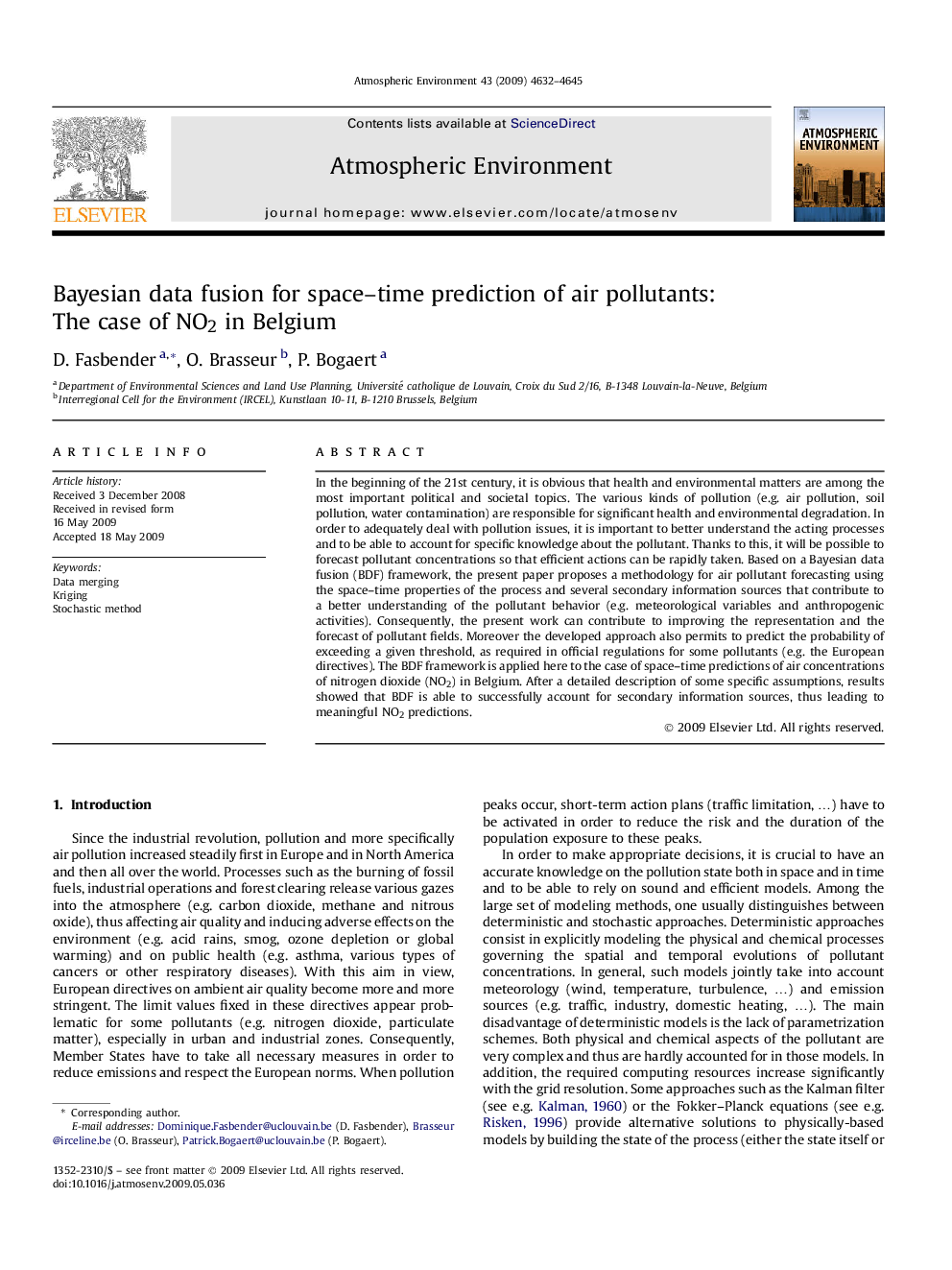| Article ID | Journal | Published Year | Pages | File Type |
|---|---|---|---|---|
| 4440758 | Atmospheric Environment | 2009 | 14 Pages |
In the beginning of the 21st century, it is obvious that health and environmental matters are among the most important political and societal topics. The various kinds of pollution (e.g. air pollution, soil pollution, water contamination) are responsible for significant health and environmental degradation. In order to adequately deal with pollution issues, it is important to better understand the acting processes and to be able to account for specific knowledge about the pollutant. Thanks to this, it will be possible to forecast pollutant concentrations so that efficient actions can be rapidly taken. Based on a Bayesian data fusion (BDF) framework, the present paper proposes a methodology for air pollutant forecasting using the space–time properties of the process and several secondary information sources that contribute to a better understanding of the pollutant behavior (e.g. meteorological variables and anthropogenic activities). Consequently, the present work can contribute to improving the representation and the forecast of pollutant fields. Moreover the developed approach also permits to predict the probability of exceeding a given threshold, as required in official regulations for some pollutants (e.g. the European directives). The BDF framework is applied here to the case of space–time predictions of air concentrations of nitrogen dioxide (NO2) in Belgium. After a detailed description of some specific assumptions, results showed that BDF is able to successfully account for secondary information sources, thus leading to meaningful NO2 predictions.
